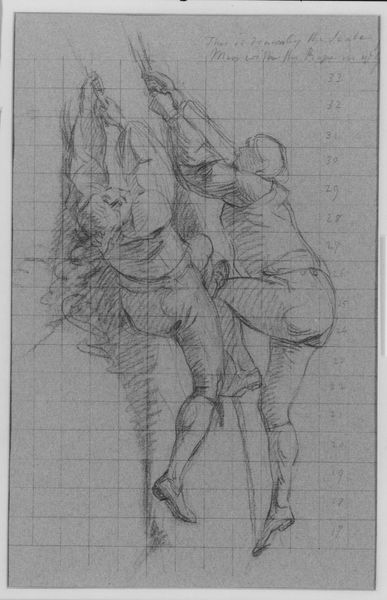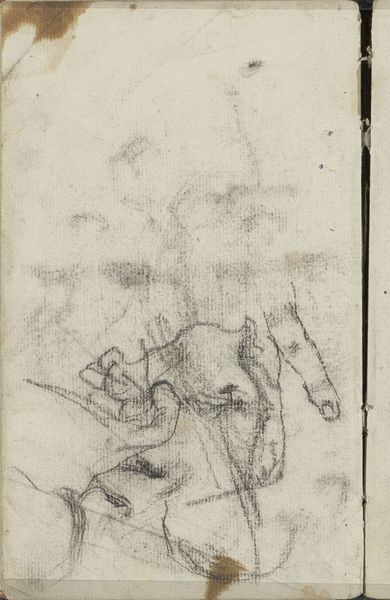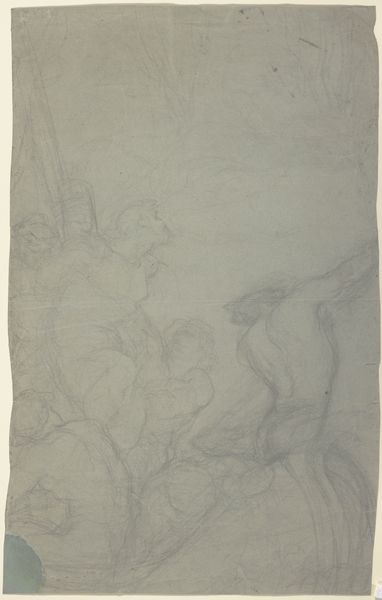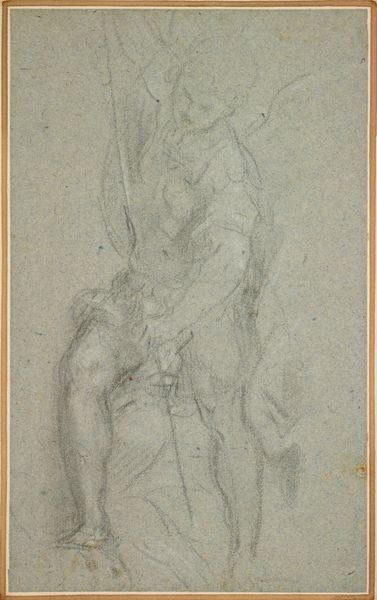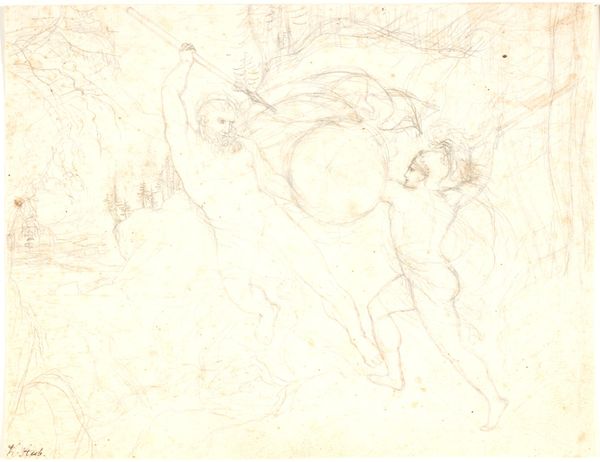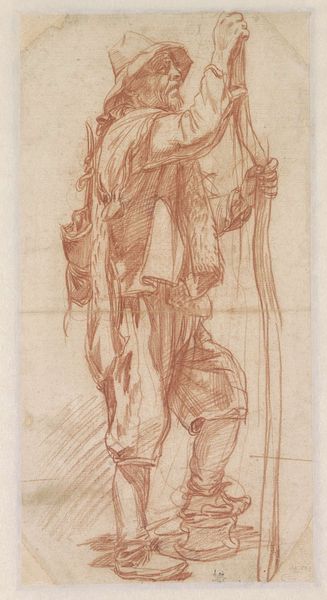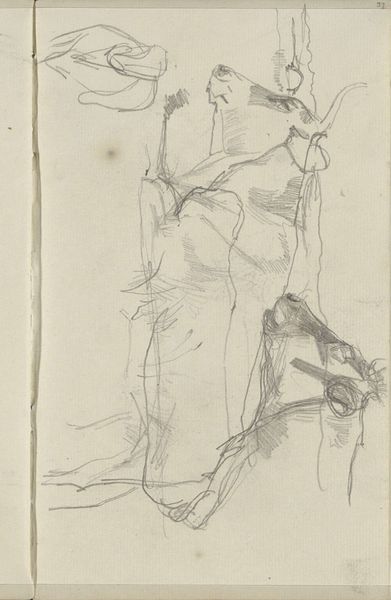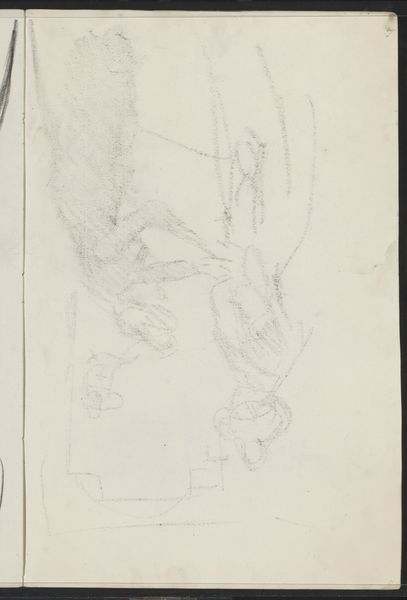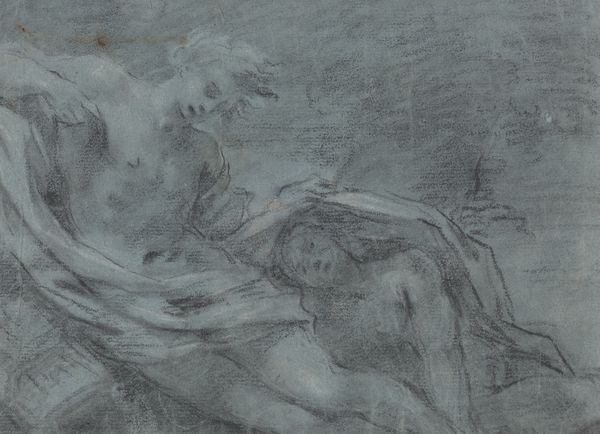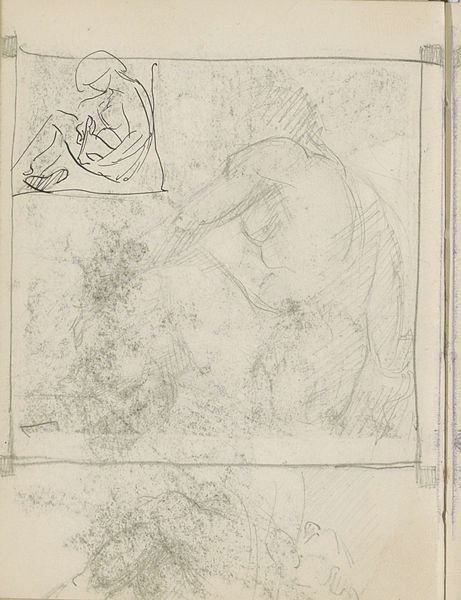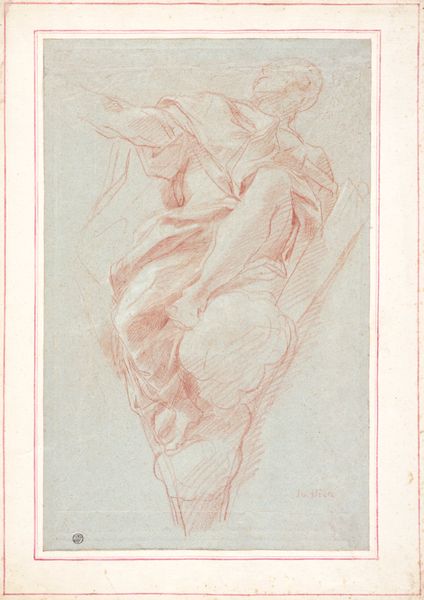
Study for "The Surrender of the Dutch Admiral De Winter to Admiral Duncan, October 11, 1797": Three Figures Raising the Colors 1798
0:00
0:00
drawing, pencil
#
drawing
#
pencil sketch
#
figuration
#
romanticism
#
pencil
#
history-painting
Dimensions: 12 7/16 x 9 in. (31.6 x 22.9 cm)
Copyright: Public Domain
John Singleton Copley made this sketch, "Study for the Surrender," using graphite on blue paper, as part of his preparation for a large-scale painting depicting a British naval victory in 1797. Copley, an American artist who made his career in London, was working in a world shaped by maritime power and colonial expansion. Here, three figures strain to raise a flag, their bodies rendered with quick, energetic lines. Their struggle can be viewed through the lens of labor and class. Consider the physical exertion implied in raising the colors, and who would have been tasked with such work. What does it mean to depict the act of surrender as a moment of physical labor? It’s worth remembering that naval victories were integral to maintaining trade routes and colonial dominance. By focusing on the effort of raising the flag, Copley’s sketch opens up questions about the human cost of empire and the varied experiences of those caught within its reach.
Comments
No comments
Be the first to comment and join the conversation on the ultimate creative platform.
